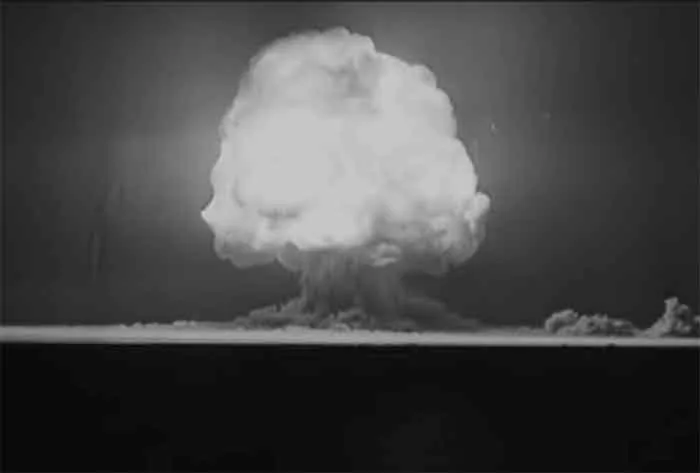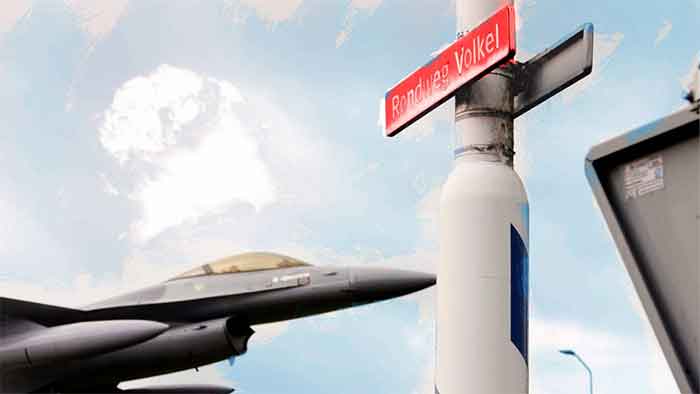
The world nuclear weapons spending found a significant increase in 2021, finds the latest International Campaign to Abolish Nuclear Weapons (ICAN) report published on Tuesday.
In one year, the nine nuclear-armed nations – U.S., China, Russia, France, India, Israel, North Korea, Pakistan and the UK — spent a total of $82.4 billion on upgrading and maintaining their estimated 13,000 nuclear weapons, marking a 9% hike from the year before, according to ICAN’s estimates.
The report — Squandered: 2021 Global Nuclear Weapons Spending — (https://assets.nationbuilder.com/ican/pages/2873/attachments/original/1655145777/Spending_Report_2022_web.pdf?1655145777), ICAN’s third annual summary of global nuclear spending, highlights that in total, the world spent a combined $156,842 every single minute of 2021 on weapons of mass destruction, amid an ongoing pandemic and rising global food insecurity.
ICAN details exactly how much each of the nine countries spent on nuclear weapons, lists the companies that profited, and the lobbyists hired to keep nuclear weapons in business.
U.S.
The U.S. turned out to be by far the biggest spender on nuclear armaments in 2021, having spent $44.2 billion – four times more than the next in line.
China
China was the only other country to exceed the ten-billion-dollar mark, at $11.7 billion spent, while Russia holds third place at $8.6 billion.
UK And France
The UK spent $6.8 billion, France, $5.9 billion.
India Israel And Pakistan
Countries like India, Israel and Pakistan each spent a little over a billion on their arsenals in 2021.
North Korea
In last place is North Korea, which spent $642 million.
So Much
The report goes on to question why and how these countries spent so much on nuclear weaponry amid myriad global issues such as food and energy shortages, but comes to the conclusion that the biggest driver of nuclear weapon spending was not security concerns but, rather, business interests.
Fortune Of U.S. Military Contractors
Certain U.S. military contractors have allegedly made a fortune from nuclear weapons-related contracts according to ICAN, and these companies spend a big chunk of their income to hire lobbyists and fund think tanks that encourage politicians to spend even more on weapons of mass destruction.
Millions For Lobbying
According to the report, Honeywell International made $6.2 billion from nuclear tenders in 2021 and spent an additional $7 million on lobbying.
NG And LM
Northrop Grumman (NG) got $5 billion and used $11.6 million for lobbying. Lockheed Martin (LM) received $1.9 billion from the industry and spent $16.9 million on lobbying.
The authors of the report note that after examining thousands of contracts, reports and lobby disclosures, they estimate that over a dozen private companies received a total of $30.2 billion in nuclear weapon contracts in 2021.
Think Tanks
“Those companies then turned around and spent $117 million lobbying decision makers to spend more money on defense. And they also spent up to $10 million funding most of the major think tanks that research and write about policy solutions about nuclear weapons,” wrote ICAN.
The report goes on to note that all this spending has done nothing to deter any sort of conflict and that recent geopolitical events in Europe have only served to further line the pockets of those who are tied to the nuclear weapons industry.
The report said: “We were told that the billions invested in thousands of weapons of mass destruction with the power to destroy the world many times over was the price to pay for peace in Europe. Instead, those billions went to line the pockets of the powerful who profit from the production of weapons of mass destruction.”
The ICAN stress that the report demonstrates that “nuclear weapons do not work” as they have failed to deter conflict in Europe.
“This is why we need multilateral disarmament more than ever. The first meeting of states parties to the Treaty on the Prohibition of Nuclear Weapons in Vienna [from June 21 to 23] could not come at a better time,” ICAN Policy and Research Coordinator Alicia Sanders-Zakre said.
ICAN is a Nobel Peace Prize-winning, Geneva-based international coalition that has been actively campaigning for the respect and full implementation of the Treaty on the Prohibition of Nuclear Weapons which it helped adopt at the UN in 2017. The treaty has been ratified by 59 countries around the world so far, however not a single nuclear state has yet to sign it.
Post-Cold War Drop In Nukes Could Be Over
A Swedish arms watchdog says the world’s stockpiles of nuclear weapons are expected to increase in coming years, reversing a decline seen since the end of the Cold War.
The number of nuclear warheads is set to grow for the first time since the Cold War, and even more worrying is that the risk of them being used is at the greatest likelihood it has been in decades.
The Stockholm International Peace Research Institute (SIPRI), said Monday that all nine nuclear-armed countries are increasing or upgrading their arsenals.
“There are clear indications that the reductions that have characterized global nuclear arsenals since the end of the Cold War have ended,” said Hans M. Kristensen, a researcher with SIPRI’s Weapons of Mass Destruction Program and director of the Nuclear Information Project at the Federation of American Scientists.
The U.S. and Russia, which hold 90% of the world’s atomic weapons, saw their inventories decline in 2021 due to the dismantling of warheads retired from military service years ago. Their useable military stockpiles remained relatively stable and within the limits set by a nuclear arms reduction treaty, SIPRI said.
The research institute said that the other nuclear states — Britain, France, China, India, Pakistan, Israel and North Korea — are either developing or deploying new weapon systems, or have announced their intention to do so. Israel has never publicly acknowledged having such weapons.
“All of the nuclear-armed states are increasing or upgrading their arsenals and most are sharpening nuclear rhetoric and the role nuclear weapons play in their military strategies,” said Wilfred Wan, the director of SIPRI’s Weapons of Mass Destruction Program. “This is a very worrying trend.”
The rising global nuclear arsenal is stoked by the war in Ukraine, the SIPRI said in its latest research.
SIPRI director Dan Smith said: “The risk of nuclear weapons being used seems higher now than at any time since the height of the cold war.”
90% in U.S. And Russia
Almost 90% of all nuclear weapons are owned by the U.S. and Russia.
Russia has the world’s largest stockpile of nuclear warheads, with around 5,977 in total — just 550 more than the U.S.
These are fractions of the stockpiles that both countries once held during the Cold War, but over the years, Russia and the U.S. have dismantled their warheads that are out of commission and can no longer be used.
The total inventory of nuclear warheads at the start of 2022 was 12,705, of which only 9,440 were in military stockpiles for potential use, according to SIPRI.
But it isn’t just the U.S. and Russia ramping up production.
The U.K. has announced a decision to increase the ceiling on its total warhead stockpile.
China has also started a substantial expansion of its nuclear weapon arsenal, with satellite images revealing the construction of over 300 new missile silos.
France officially restarted a program to develop third-generation powered ballistic missiles.
India and Pakistan are also among the handful that has been increasing their nuclear warhead stockpiles, according to the Federation of American Scientists (FAS).
SIPRI has indicated that unless “immediate and concrete action” is taken by the nuclear powers, global inventories of warheads could soon begin to rise for the first time in decades.
“Relations between the world’s great powers have deteriorated further at a time when humanity and the planet face an array of profound and pressing common challenges that can only be addressed by international cooperation,” SIPRI board chairman and former Swedish Prime Minister Stefan Lofven said.
The United Nations Secretary-General Antonio Guterres told reporters on Mar. 14 Monday that “the prospect of nuclear conflict, once unthinkable, is now back within the realm of possibility.”
Russian Foreign Minister Sergei Lavrov in an interview with Russian state TV on Apr. 24 said that the risk of nuclear war between Russia and the West was now “considerable,” and that the current danger may be greater than that faced at the most dangerous moment of the Cold War.
‘War Is Good For Business’
A Reuters report from weapons expo in France said:
Next to Ukraine’s stand at the world’s largest arms fair for ground forces on Monday, U.S. manufacturer Lockheed Martin proudly displays its anti-tank Javelin missile like a big brother protecting its younger sibling.
The symbolism was not lost on some of the thousands of people who make, buy and use advanced weapons.
“This year is all about Ukraine. War is good for business, but it is not something I am happy about,” one eastern European manufacturer said speaking on condition of anonymity.
Returning after a COVID-19 pandemic hiatus, the exhibition bristles with weaponry from about 60 countries, including tanks, armored vehicles, riot gear and display cases crammed with guns and ammunition.
The report said:
This year, the world’s second largest arms exporter is absent: three Russian manufacturers were set to come but pulled out. Meanwhile, among the 1,700 exhibitors, the numbers of stands from some Baltic and eastern European countries have doubled or tripled.
Many in attendance spoke of a massive surge in demand as countries ramp up production, both to send munitions to Ukraine and to beef up their own arsenals.
“France has entered a war economy,” President Emmanuel Macron said at the opening of the arms show, calling for European powers to learn from their past mistakes and develop the defence industry amongst themselves.
“We have to go much further, much more quickly and more strongly because geopolitics dictates.”
Several manufacturers told Reuters there was a shortage of capacity, notably in Europe, which has for years depended on imported – especially American – arms. Some providers said they would not be able to catch up to the demand to arm Ukraine until 2024-2025.
Elie Tenenbaum, Director of the Security Studies Centre at the Paris-based Institute of International relations, said Ukraine’s armed forces were now using more ammunition in a day than Europe’s arms industry could produce in a month.
“We now have a European defence industry which is unfit for the warfare we see in Ukraine,” he said.
A lack of production capacity both for Ukraine and Russia could eventually slow the pace of the conflict, he added.
Highlighting that urgency, Le Monde newspaper reported on Monday that French authorities were considering legislation to requisition civilian factories to increase the capacity to make weapons.













































